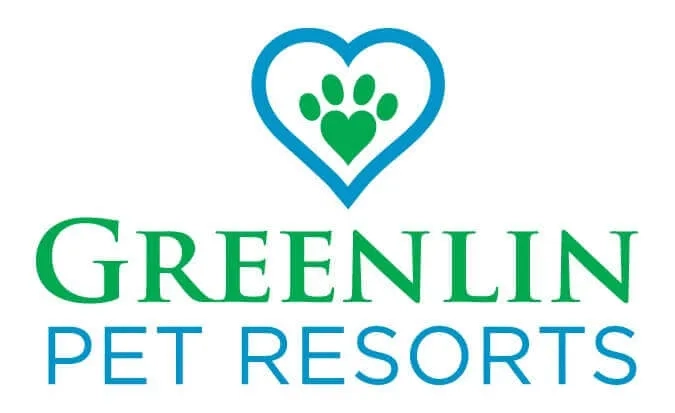Hosting Guests With Pets: How to Navigate Pet Interactions

Whether you’re opening your home to visiting pets for the first time or you’re a seasoned host with a pet-loving social circle, making sure everyone, two-legged and four, gets along can be a bit of an art.
Luckily, with a little planning, a dash of patience, and a good sense of humor, you can help create a space where tails wag and no fur flies.
Why Pet Etiquette Matters (for Hosts and Guests)
When pets and people come together under one roof, things can get lively fast. That’s why a little etiquette goes a long way.
Good pet manners aren’t just about keeping your throw pillows safe (though that is a nice bonus). It’s about making sure all animals and humans feel comfortable, safe, and respected, especially in unfamiliar territory.
Without a bit of preparation, even the friendliest pets can get overwhelmed. One misunderstood bark, swat, or snuggle attempt can turn into a game of chase no one signed up for.
Setting expectations early and creating a calm, pet-friendly space shows your guests, and their animals, that your home is a place where everyone belongs.
Before the Visit: Prep Like a Pro
Just like hosting any houseguest, a little prep work can make a big difference, especially when paws are involved. Before the zoomies begin, take a few minutes to set the stage for a smooth (and mostly slobber-free) visit.
Ask the Right Questions
Think of this as your pre-visit pet profile. Before your guests arrive, ask:
- What kind of pet are they bringing? (Dog? Cat? Ferret? You never know.)
- Have they met other pets before? Are they social butterflies or shy snuggle bugs?
- Are there any triggers, fears, or food sensitivities to know about? Knowing in advance helps you avoid awkward surprises, like growling over chew toys or a sudden dash under the couch.
Being upfront isn’t being fussy, it’s being a thoughtful host for everyone in the house.
Prep Your Home
Give your space a quick once-over before paws hit the ground:
- Create a safe zone for your own pets: Whether it’s a quiet room, cozy crate, or gated area, it helps if your pets have a place to retreat when they need a break.
- Remove tempting items: Food bowls, high-value toys, or favorite napping spots can trigger a bit of territorial tension.
- Stash anything chewable or breakable: If you’d cry over it being chewed, slobbered on, or knocked off a shelf, maybe move it for now.
A few small changes can go a long way toward helping pets feel secure and setting everyone up for success.
When Pets Meet: First Impressions Matter
You know what they say, first impressions count. And when it comes to pet introductions, a calm, controlled hello can make all the difference between instant friendship and a little growling from the sidelines.
Whether it’s two dogs, a dog and a cat, or a curious pup meeting your resident goldfish, starting things off slow and steady sets everyone up for a more peaceful visit.
Start Slow and Supervised
Let pets get a feel for each other from a safe distance:
- Use leashes, baby gates, or crates to allow a visual introduction without full contact.
- Let them sniff from afar and observe body language before jumping into playtime.
- Keep initial greetings short, sweet, and low-pressure, not every pet wants to become instant BFFs.
Resist the urge to “just see how it goes.” Gentle guidance is key, especially when emotions (and tails) are high.
Read the Room (and the Body Language)
Animals speak volumes with their posture, ears, tails, and eyes. Here are a few signals to watch:
- Loose body, wiggly tail, soft eyes = friendly curiosity
- Stiff stance, fixed stare, ears back, tail high = tension brewing
- Avoidance, hiding, or backing away = needs more time and space
If either pet looks uncomfortable, pause the introduction. There’s no deadline for making friends, and sometimes, parallel play in separate areas is the best first step.
During the Visit: Keep the Peace
Once the introductions are done and tails are cautiously wagging, it’s tempting to breathe a sigh of relief and let the pets figure things out on their own. But just like with toddlers at a playdate, things can go from sweet to squabble in the blink of an eye.
A little gentle oversight can help keep everyone relaxed, and your throw pillows intact.
Keep an Eye on Interactions
Even the friendliest pets can get overwhelmed or overstimulated. Make it a habit to check in often:
- Watch body language during play, some dogs (and cats) can get a little carried away.
- Step in early if you see signs of stress, like excessive mounting, hiding, snapping, or nonstop barking.
- Offer breaks in separate spaces if anyone seems overstimulated. Even a five-minute timeout can reset the mood.
Think of yourself as a soft-spoken referee, keeping the peace without needing a whistle.
Stick to Familiar Routines
Pets feel safer when they know what to expect, especially in new environments:
- Feed both your pet and your guest’s pet on their usual schedule, and in separate areas to avoid resource guarding.
- Stick to potty breaks and walks close to their normal routine, if possible.
- Try to keep noise and commotion low, especially during rest times, both pets will appreciate it.
Maintaining a bit of routine in the middle of a new situation helps reduce stress and keeps pets feeling grounded.
If It’s Not Working: When to Step In
Sometimes, despite your best efforts, the vibes just aren’t vibing. One pet’s a little too energetic, the other’s a little too nervous, and suddenly you’re refereeing a game no one wants to play.
That’s okay! Not all pets are instant pals, and not every visit has to be a picture-perfect cuddle fest.
Signs It’s Time to Step In
- Persistent growling, barking, or staring: These behaviors can be early warning signs of stress or brewing conflict, especially if they don’t ease up after a few minutes.
- Attempts to hide or escape: If a pet is seeking out quiet corners or trying to flee the situation, they’re likely feeling overwhelmed and need space.
- Tense body language or snapped tolerance: Stiff posture, pinned ears, or sudden snapping often means a pet has reached their limit and isn’t comfortable continuing the interaction.
- One pet constantly pestering the other despite corrections: If one animal won’t give the other a break, even after redirection, it’s time to separate them and give both some breathing room.
If things aren’t improving or getting worse, it’s time to hit pause.
Solutions That Don’t Hurt Feelings
- Separate the pets for the rest of the visit. Let each one have their own space and attention without the pressure of constant interaction.
- Offer a quiet crate, room, or gated area for decompression, toys, and a little alone time.
- Suggest a neutral meet-up next time instead of an indoor visit. A walk or park date might work better for building trust over time.
Remember: protecting the comfort of both animals is a win for everyone, including your friendship.
When in Doubt, Daycare to the Rescue
Even with the best intentions (and the cutest visiting pets), sometimes it’s just easier to give everyone a little space, and that’s where doggy daycare comes in.
If your pet is shy, protective of their space, or just not thrilled about sharing their toys, a day at daycare can be the perfect pressure release. It’s not a punishment, it’s a mini vacation filled with playtime, attention, and a break from the hustle and bustle at home.
Why It Helps
- Reduces stress and overstimulation: Your pet gets a calm, familiar environment while your guests settle in at home. No awkward growling matches over the water bowl.
- Prevents pet-on-pet drama: If your pet and your guest’s pet aren’t exactly soulmates, separating them can keep the peace and your furniture intact.
- Keeps your pet engaged and happy: Instead of feeling left out or overwhelmed, your pet gets to play with their friends (and maybe show off a little to the staff).
- Helps maintain routine: While everything else is changing, your pet still gets their usual meals, nap time, and exercise in a place they feel safe.
Whether you need just a few hours or a full day of breathing room, daycare is a gentle, thoughtful way to give everyone, furry or otherwise, a better hosting experience.
Keep Everyone Wagging With Greenlin Pet Resorts
Hosting guests with pets doesn’t have to be a juggling act. Whether your own furry family member needs a breather, or you’d rather avoid the chaos of a multi-pet meet-and-greet altogether, Greenlin Pet Resorts is here to help.
Our daycare programs are designed to support your pet’s emotional wellbeing, offering safe, supervised play, quiet rest spaces, and a whole lot of tail-wagging fun. And while they’re enjoying their own mini retreat, you can focus on being the gracious host (without worrying about who’s growling at who).
Ready to make your next visit smoother for everyone involved? Call (717) 388-8110 or visit Greenlin Pet Resorts to learn more and book a stay your pet will actually thank you for.
